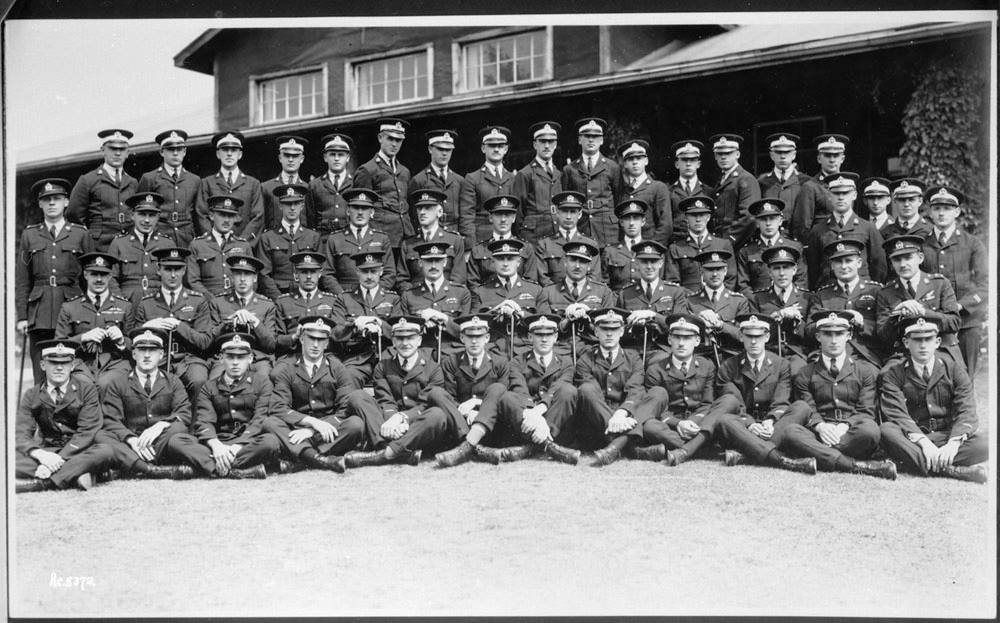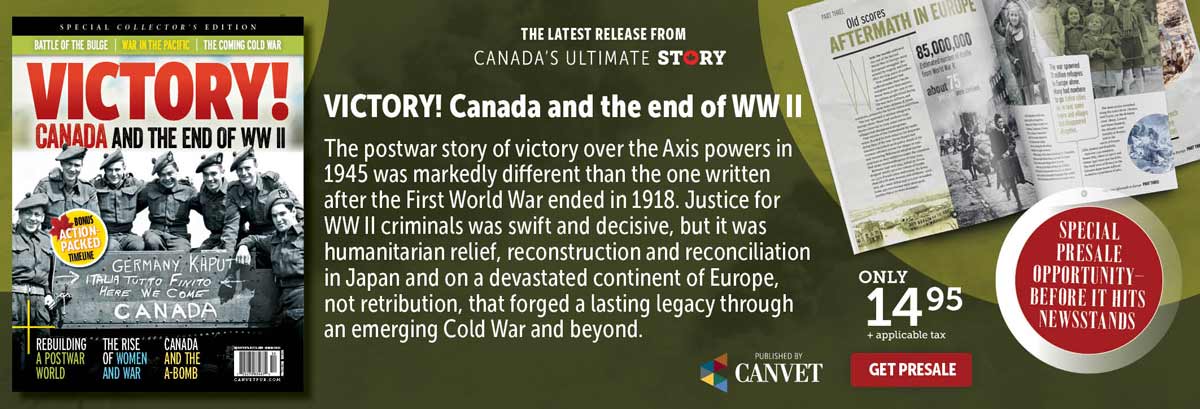
The first Royal Canadian Air Force wings parade took place at Camp Borden on Dec. 20, 1924. The graduates were the first new pilots trained in Canada since the Armistice in 1918. [LAC–MIKAN 3577539]
In September 1914, just one month after entering the First World War, Canada sent one aircraft of the Canadian Aviation Corps to England.
It was only a decade after the first controlled powered flight, and military use of aircraft was still in its infancy. Italy had used aircraft for reconnaissance photography and to direct artillery fire in the year-long war with Turkey ending in 1912. They had even dropped grenades from aircraft and are credited with the first military aerial bombing.
But at the beginning of the First World War, planes were made from wood and fabric and were hardly robust. Canada’s first military aircraft reportedly disintegrated soon after landing. Any Canadian who wanted to fly had to join the Royal Air Force.
The war spurred exponential development of aircraft technology. Soon planes were more than eyes in the air, and were armed and used for ground attacks, dog fights and anti-submarine patrols.
More than 22,000 Canadians served as pilots, observers and mechanics in the RAF by the time the war ended, collectively earning more than 800 decorations for valour, including three Victoria Crosses. Canada produced 171 air aces, pilots or gunners who destroyed five or more enemy aircraft or air ships. About 1,600 Canadian airmen died during the war.
Near the end of the war, the British Air Ministry authorized an independent Canadian Air Force. Canada chose air ace Billy Bishop, now a lieutenant-colonel, as commander. He began setting up fighter and bomber squadrons, but the war ended before they got off the ground.
Although planes had proved their military value during the war, Canada wrestled with the idea of maintaining a military air force in the following peace. The Air Board was established in 1919 to control civilian, government and military flight within Canada.
The board created the Canadian Air Force in 1920 as a small air militia employing wartime pilots flying surplus British aircraft. It was absorbed into the new Department of National Defence in 1923, and the CAF became responsible for civilian as well as military aviation.
On April 1, 1924, the Royal Canadian Air Force was created, but it wasn’t until the 1930s that it became purely military. In 1938, it achieved separate service status equal to the Canadian army and navy. At the beginning of the Second World War, the RCAF had about 4,000 personnel, but few of its 270 aircraft were modern. That changed quickly.
Canada ended the Second World War with the fourth largest air force, with more than 215,000 personnel. It had produced more than 16,000 military aircraft and had trained more than 131,000 air crew in the British Commonwealth Air Training Program.
Advertisement




















